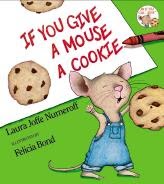The Three Bears
Paul Galdone
Voice
Lesson Focus: Using voice in writing
Focus Grade Level: First Grade
Time Frame: One Day
Focus Text/Author: The Three Bears/ Paul Galdone
Supporting Text:
· Goldilocks and The Three Bears/ James Marshall
· Martha Speaks/ Susan Meddaugh
Other Materials:
· Chart paper
· Letter writing paper
· Markers
· pencils
Ohio Academic Content Standards Lesson Focus:
Standards: Writing Process and Writing Applications
K-2 Benchmark:
Writing Process
B. Develop audience and purpose for self-selected and assigned writing tasks.
Writing Applications
A. Compose writings that convey a clear message and include well-chosen details.
C. Write friendly letters and invitations complete with date, salutation, body, closing and
signature.
1st Grade Level Indicators:
Writing Process
2. Develop a main idea for writing.
3. Determine purpose and audience.
10. Add descriptive words and details.
Writing Applications
3. Write friendly letters or invitations that follow a simple letter format.
Book Summary:
In this children's classic, Galdone gives a new generation of readers an entertaining look at Little Wee Bear, Middle-Sized Bear, Great Big Bear, and Goldilocks. Graphically interesting, the text appears respectively sized in "Little Wee," "Middle-Sized" and "Great Big" characters, cleverly differentiating each bear's speech.
About the Author:
Paul Galdone was born in 1907 in Budapest, Austria- Hungary and immigrated to the United States in 1921. Galdone studied art and served in World War II. In addition to being an author and illustrator of children's books, he was employed as a bus boy, electrician's helper, and fur dryer. His work was awarded runner up for the Caldecott Medal and selection by the American Library Association for notable books. He died of a heart attack on 7 November 1986, in New York.
Before the Lesson:
This should not be your students’ first letter writing experience. This should be a review for them and the teacher’s letter should be a model. It should also be a familiar read for the students. Remember to use the Three Little Bears as an example of different ways to include a character’s or author’s voice in their writing.
Lesson Steps:
1. Read the story of The Three Bears to the class. Remind students of how he uses different names for the characters.
2. Discuss how Paul Galdone used the three voices of the bears to understand the characters feelings and actions in the story. How did Baby Bear feel? How did you know that? How did Papa Bear feel? How did Paul help you know that? How did Mama Bear feel? What makes you think that?
3. How did changing our voice help us know who was talking in the story? This is an example of voice in stories. Good writers use voice to help their readers understand who is talking in their stories just like Paul did,
4. Tell students and turn to a partner to talk like Papa Bear would to Goldilocks. Discuss how his voice would be stern and firm. Do the same thing with Mama Bear’s voice. How did she feel? Sad because she did not have permission or an invitation to come in. Then do it with Baby Bear’s voice. How did he talk? Hurt, because his things were broken.
5. Model writing a letter using a think aloud of how Mama Bear would write to Goldilocks. As you write the letter, remind students of where to put capitals, punctuation and indentations (although this is not the complete focus). “I think if I was Mama Bear, I would say that I was disappointed in his behavior. That is how my mom talks to me. I would also say I hope he asks permission next time because I hear my mom say that a lot.”
6. Have students state why you can tell it is from Mama Bear before reading the closing. Encourage connections to their own lives and how their mom’s would talk.
7. Have students go back and write a letter to Goldilocks from one of the three bears using voice just like Paul did in his writing. Remind students that they will want the reader to know who is writing the letter without looking at who it is from. Tell students to not put who it is from yet until after the partner share.
8. Have students share their letters with a partner. Can their partner tell who it is from? If so, why? If not, how could they make it better?
9. Encourage students to fix anything that will make their voice clear in their letters. Then write who the letter is from.
10. Post examples of writing that used voice like good writers do.
11. Encourage to practice using voice in letters or writing stories. Explore other books to understand how voice is used to create humor, sadness, anger and other emotions.
Additional Resources:










